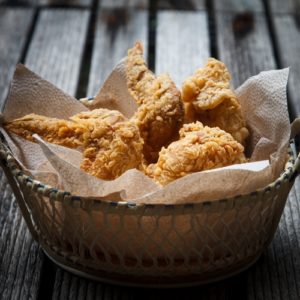Up until the 20th century, Americans commonly used lard as a cooking fat, shortening or just a spread to be enjoyed with a slice of bread Then, as NPR pointed out, the public came to regard pig fat as exceptionally unhealthy. This was partially due to Upton Sinclair’s fictional depiction of its production in his 1906 novel “The Jungle.” However, a marketing campaign for Crisco brand vegetable shortening also spread the impression that lard was a less wholesome option. Nonetheless, over recent years lard has made a comeback in many restaurant and home kitchens. If you are attending culinary academy, you should know about lard’s place in cooking and why some chefs love to use it:
The advantages of lard
In several applications, lard can be superior to other kinds of fat that have been more commonly used in cooking over the last century. Kitchn suggested its neutral flavor and versatility are major advantages. Indeed, lard serves for a range of culinary uses, such as sauteing, deep-frying and even baking. Baked goods made with pig fat, like pie crusts and biscuits, are especially flaky and tender.
Lard is most popularly used for frying, and this comes down to the amount of smoke it produces in the process. As Serious Eats explained, every kind of fat has a smoke point, a temperature at which it goes from shimmering in the pan to billowing clouds. However, lard’s smoke point of 370 degrees Fahrenheit is higher than butter or vegetable shortening, and even when it hits that temperature it tends to give off less smoke than other fats.
Some experts, like food writer Corby Kummer, have even suggested that lard is a relatively healthy fat. Writing in the New York Times, Kummer argued that lard contains less saturated fat than butter or coconut oil and is 45 percent monounsaturated fat. According to the American Heart Association, monounsaturated fat can reduce levels of bad cholesterol, guarding against heart disease and stroke.
Tasty traditions
Lard is also tied to cultural traditions, providing people from a variety of backgrounds with connections to their families and heritages. Lonely Planet explained that salo is a beloved dish in Ukrainian cuisine featuring cured back fat seasoned with garlic, black pepper or paprika and served on rye or sourdough bread. Polish people use lard as a spread called smalec, adding ingredients like apples or bacon.
Though it fell into disuse in other parts of the U.S., lard has always retained strong partisans in the American South. The fat is essential to traditional recipes for fried chicken, biscuits and other staples of regional cooking. Southern Living described the loyalty to lard as part of the “agreeable gluttony” inherent to the culture.
Cooking with lard in the 21st century
A number of prominent restaurateurs currently use lard in their cooking. This is partially because the chefs wish to adhere to those Southern traditions, even as they find new ways to approach ingredients and dishes.
Food writer Josh Ozersky coined the term “lardcore” to describe this school of Southern chefs who update soul food and other regional cuisines with a tinge of the gourmet. Though many of the dishes on the menu at the restaurants of New Orleans’ John Besh or Atlanta’s Linton Hopkins may not actually feature the fat, they are consistent in contributing a touch of sophistication to the frequently maligned traditions of Southern cooking.
One of the most celebrated among the chefs in the movement is Sean Brock of Husk Restaurant and McCrady’s Restaurant in Charleston, South Carolina. His establishments serve entrees like a pan-fried pork loin with cauliflower, chestnut and polenta di riso. Brock told The Splendid Table that in addition to showing off a heritage of Southern cooking using lard is part of a commitment to sustainable practices and using every part of a slaughtered pig.
“We’re very focused on using the entire animal,” Brock said. “We have lots of lard and it just works its way into our cuisine. It doesn’t hurt that it’s absolutely delicious.”
There are likely local options available if you wish to obtain high-quality lard produced with sustainable practices. Modern Farmer explained that a major benefit of purchasing lard directly from a hog farmer is that it has not undergone the hydrogenation processing that keeps the fat fresh on grocery store shelves. Find out what’s available in your area, and perhaps you too can take part in lard’s resurgence.



